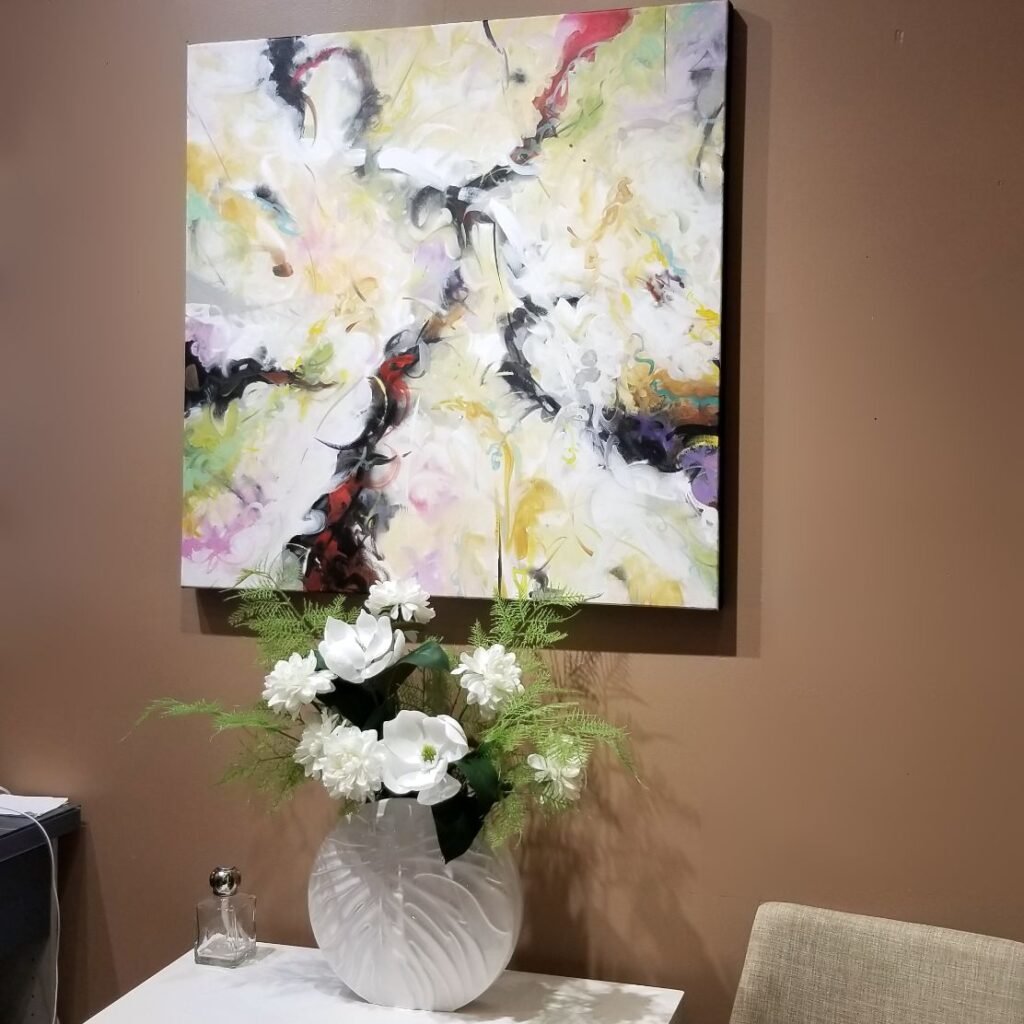Commissioning a painting is an amazing option for having your unique vision translated onto canvas or paper through the skill of an artist’s hand. Before you get started, however, it is important to understand the intricacies of the process. Learning about the important considerations will allow you to identify an artist who is an ideal fit for your project and who you will be able to form a successful working relationship with.
Refine your vision
Before contacting a gallery, you’ll want to define the parameters of your project and assess your needs so that the artist understands your expectation and takes time to consider your aesthetic. Are you inspired by their previous works or a certain style of art? Do you want to convey a certain idea, story, or theme? Do you want an artist who works with a specific technique or material? Do you have something very specific in mind, or are you content for the artist to have some creative freedom in their interpretation of your idea?
At this stage, you will want to take into account any logistical considerations such as timeline and budget, as well as the eventual location where the artwork will be placed and its scale. Consider as well if the art needs to be weather resistant or durable (in the case of outdoor art or art that hangs in high-traffic areas).
All of these elements will need to be articulated in the brief you send to the artist.
Research the market
Take some time to research the market. It’s a good idea to broaden your knowledge of artist practices if you don’t already have a working knowledge and get a feel for art styles you like. Instagram can be a fantastic way to explore talent and to easily view an artist’s body of work.
Identify who you want to work with
Once you’ve narrowed down the pool of talent and found the artist you want to work with, it’s time to contact the gallery representing the artist. Several of the artists we represent will accept commission work.

There are a couple of things to keep in mind. The first is that even if an artist is very skilled, they may not be able to take on your commission. They could not be comfortable working with your desired volume or scale because of lack of experience, time availability or the limits of their working space. The second is that the artist may not be accepting commissions, or they may not be inspired to create work that fits the brief. This is why working with an experienced gallery owner or art dealer will facilitate the process of commissioning a painting
Most of the time, you will be met with an enthusiastic ‘yes’. In the event that you are given a regretful ‘no’, don’t lose hope! A ‘no’ is still a good thing. It means that you have the opportunity to find someone who will be truly enthusiastic about your project.
Get to know your artist
Once you begin working with your artist, get to know them, their career as an artist, and their materials and practice. If you are familiar with how their work has evolved, you will better understand the themes and processes behind their work and will be better able to discuss how their practices can be applied to your project.
One of the wonderful things about working with an artist is the forming of a personal connection with the person creating your piece. It is important to understand one another and to develop open communication.
Develop ideas
Beyond the initial brief, you and your artist should work together to develop your ideas before the actual creation of the artwork begins. Listen to the insights provided by your artist. They work with their materials daily and are used to developing strategies and concepts for artwork. They have a depth of knowledge about their craft that we do not. In the same vein, make sure to clearly express your ideas as well. The artist does not have access to your mind, so the better they understand your vision, the better the outcome of the piece will be.
Even if you have a strong idea of what you want the end result to be, it is important to allow your artist some freedom as they create. They are not a manufacturer, and so there will always be more nuance to a finished piece than there is in the preliminary sketches they may give you. This is a benefit to working with an artist. Those personal touches and subtleties make the piece something truly unique.
Finalizing the details
Once the concept is nailed down, it’s time to establish the specifics in collaboration with the artist. This will include things like deciding which materials will be used, what kind of finish the end result will have, and the colour palette.
This is the time to discuss timelines for your project and whether or not you want to have milestones at which your artist will send you a progress update or if you want to be surprised by the grand finale. When setting your final deadline, be mindful of any time needed for delivery and installation, the artist’s process, and a little bit of wiggle room for unexpected delays.
Sit back and enjoy watching your vision be realized
Commissioning a painting gives you the opportunity to collaborate closely with your chosen artist to create something amazing. Once you’ve put in the legwork of research, communication, and contracts, it’s time to sit back and watch the creation of your masterpiece unfold. Give us a call if you have something you’d like put on canvas, and we can put you in touch with the right artist.
Be sure to keep an eye out for our upcoming article about framing to learn how to put the perfect finishing touch on your commissioned work.